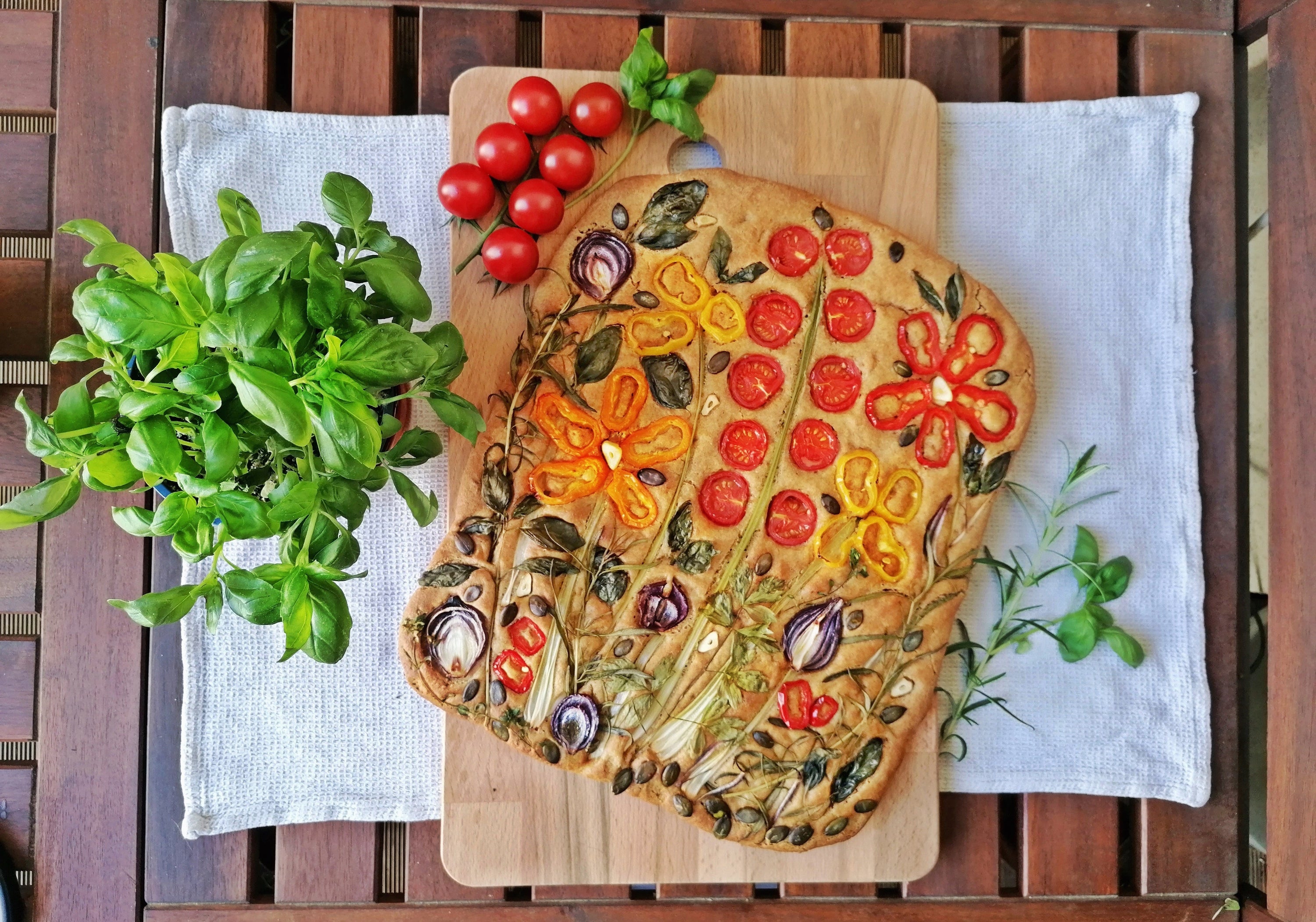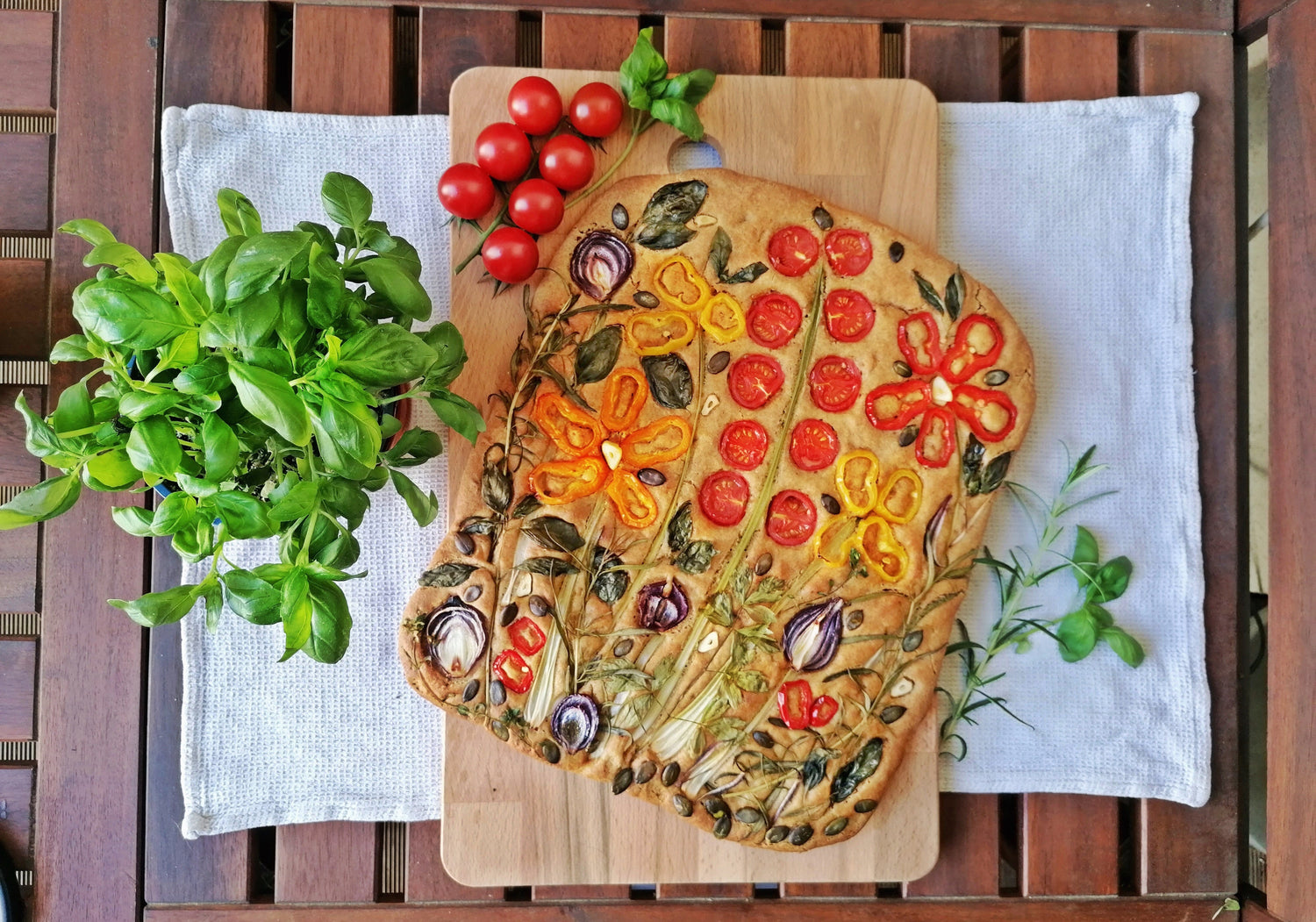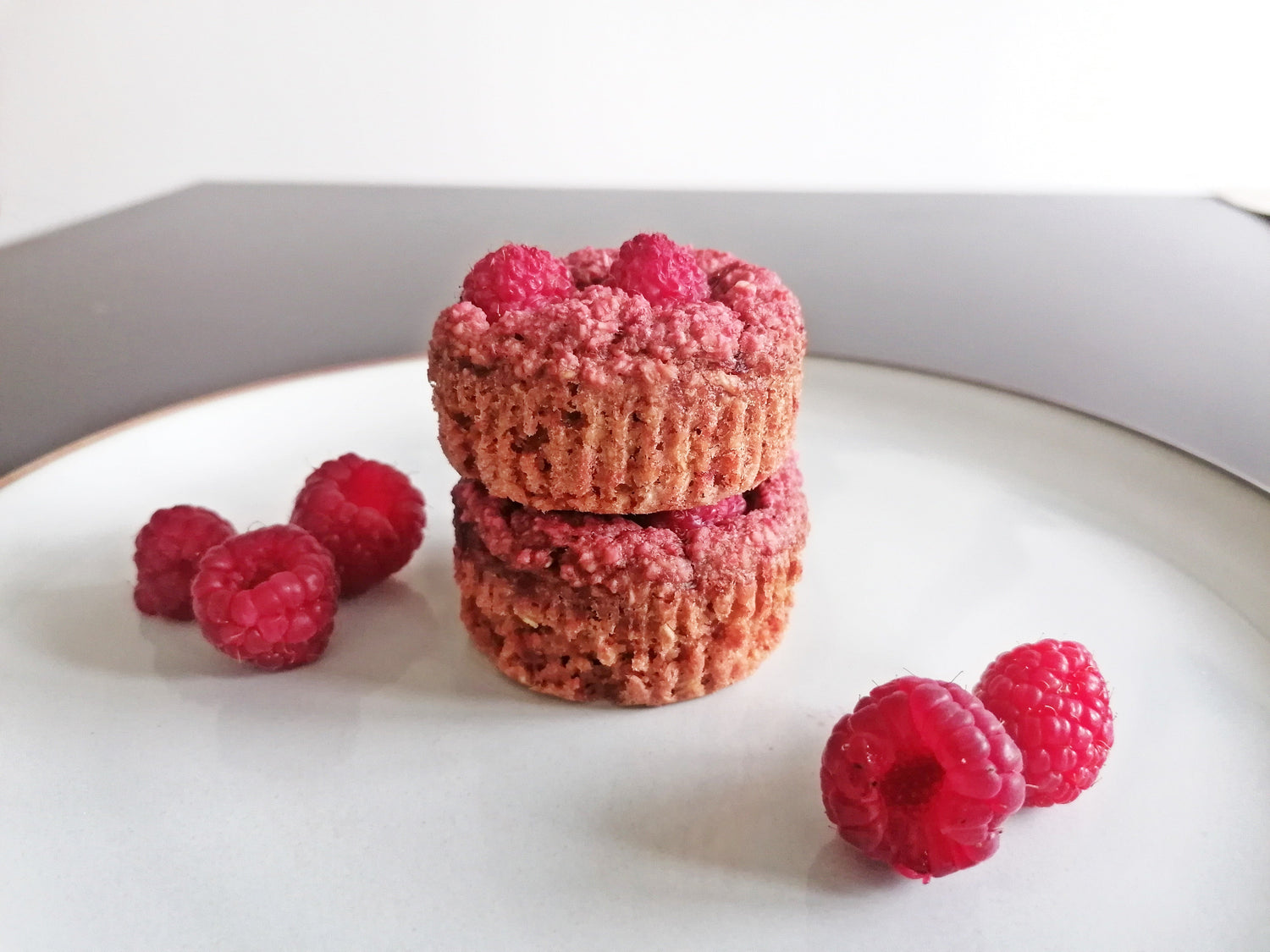Since we eat with our eyes first, today we are turning our kitchen into a culinary art studio. With our flower focaccia recipe, you can let your creativity run wild and conjure up a culinary delicacy in no time - perfect for the first spring picnic or kicking off barbecue season.
While the traditional Italian focaccia made with white wheat flour lacks the nutritional benefits for a healthy gut microbiome, we've given this dish a healthy makeover. Discover more about the advantages of integrating ancient grains like einkorn into your diet below.
But for now, let's dive right into the recipe:
Ingredients
For the dough:
- 1/2 yeast cube (21g)
- 320 ml water, lukewarm
- 50 ml olive oil
- 1 tsp sugar
- 2 tsp salt
- 500 g einkorn wholemeal flour
For the topping:
Here, you can select the ingredients according to your preference. We've utilized the following ingredients:
- Spring onion
- Cocktail tomatoes
- Pointed peppers (red, orange, yellow)
- Red onion
- Garlic
- Pumpkin seeds
- Fresh herbs: rosemary, basil, marjoram, parsley, …
Other excellent choices include asparagus for flower stems, olive rings as flower pistils, mushrooms, and corn. For a nearly authentic meadow appearance, consider incorporating edible meadow flowers like dandelions, daisies, and marguerites, or wild herbs.

Preparation
- Mix the yeast with sugar and lukewarm water in a bowl until smooth. Add olive oil, salt and flour. Knead the ingredients into a smooth, sticky dough.
- Cover the dough and allow it to rise for approximately 1.5 hours, or until it has roughly doubled in volume. The speed of this process may vary depending on the temperature of your kitchen.
- After briefly kneading the dough once more on a floured work surface, transfer it onto a baking tray lined with parchment paper or into an oiled baking pan. Slightly coat your hands with olive oil and shape the dough to your liking.
- Now prepare your flower meadow: Slice the spring onions lengthwise to form stems. Cut the pointed peppers, red onions, and garlic into slices, and halve the cocktail tomatoes. Wash and dry your fresh herbs.
- If needed, gently spread the dough apart again. Then, arrange your vegetables and herbs on the dough to create a vibrant flower meadow.
- Press the ingredients gently into the dough and drizzle an additional 2 tablespoons of olive oil evenly over your creation.
- Let your focaccia rise again for about 30 minutes. Towards the end, preheat your oven to 200°C.
- Bake your focaccia for about 20 minutes until the dough turns golden brown.
- For cooling, it's advisable to transfer the focaccia onto a rack.
- The final step: Enjoy your focaccia and savor the compliments from your guests!

This is what the flower focaccia looks like before and after baking.
Baking properties of einkorn
Unfortunately, the baking properties of einkorn are not as ideal as those of wheat. This is due to the different gluten composition, resulting in less effective gluten properties of the flour. Our focaccia is therefore a little firmer than the original, but impresses with a subtle nutty taste and nutritional benefits.
By the way, einkorn has a slightly yellowish color. This is due to the high content of healthy carotenoids!

The focaccia made with whole grain einkorn flour may not be as fluffy as the original, but it wins with its aromatic flavor and nourishes your gut microbes.
Health benefits of einkorn
The traditional Italian focaccia, much like many other common breads and pastries, is crafted from white wheat flour. Einkorn, alongside emmer and spelt, is also part of the wheat family, albeit with a distinct composition of proteins, fiber, minerals, and vitamins. Einkorn is classified as an "ancient grain" due to its status as one of the oldest cultivated crops, retaining minimal genetic alteration through selective breeding compared to modern wheat varieties.
In comparison to conventional wheat, einkorn boasts higher levels of (1,2):
- Minerals, especially zinc and iron
- Vitamin E (has an antioxidant effect)
- Carotenoids (secondary plant substances that have an antioxidant effect and are converted into vitamin A in the body)
- Protein
- Fructan (a prebiotic fiber that supports your gut bacteria and can improve the absorption of zinc and iron)
In addition, a diverse diet is of great benefit for a healthy gut microbiome. This is why we encourage you to regularly explore new foods!
This is why einkorn bread is better tolerated by many individuals
Wheat is often demonized these days. However, we would like to emphasize that whole grain wheat products play a vital role in a healthy, balanced diet. Nevertheless, for some individuals, the proteins found in wheat can trigger issues, leading to celiac disease (gluten intolerance), non-celiac wheat sensitivity or wheat allergy. People with irritable bowel syndrome in particular often have difficulty tolerating wheat (1).
Einkorn, on the other hand, appears to have a significantly lower allergenic and inflammatory potential compared to conventional wheat and spelt. Researchers attribute this to its unique protein composition:
- Lower allergenic potential: Although einkorn has a higher protein content overall, it contains less of the proteins that are classified as potential allergy triggers (1).
- Lower inflammatory potential: ATIs (alpha-amylase/trypsin inhibitors) are special grain proteins that are suspected of causing inflammation. In comparison to conventional wheat, einkorn has a lower content of these proteins (1).
- Better digestibility of gluten: Gluten is known as the "sticky protein", comprising proteins from the prolamins and glutenin groups, and contributes to the excellent baking properties of numerous grains. Einkorn also contains gluten, albeit in a composition different from that of conventional wheat. This appears to be easier for digestion and leads to fewer gluten-related disorders (3).
Additional tip: Extended proofing time enhances bread digestibility
Although not directly related to einkorn, this point is certainly noteworthy. Allowing bread to undergo a lengthy proofing process over several hours significantly aids in the breakdown of FODMAPs, which can trigger symptoms, particularly in individuals with irritable bowel syndrome (4). Therefore, it's worthwhile to prioritize quality and opt for bread from bakeries that adhere to traditional production methods like sourdough fermentation. Most bakeries offering einkorn bread tend to follow these practices.
In our recipe e-book "Microbiome Food" you'll discover numerous other delicious and gut-healthy recipes, including instructions for crafting homemade sourdough bread. Additionally, you'll find valuable insights into how food impacts your gut health. Purchase now!
References
- Afzal M, Sielaff M, Distler U, Schuppan D, Tenzer S, Longin CFH (2023). Reference proteomes of five wheat species as a starting point for future design of cultivars with lower allergenic potential. Npj Sci Food. 7(1):9.
- Hidalgo A, Brandolini A. (2014). Nutritional properties of einkorn wheat (Triticum monococcum L.). J Sci Food Agric. 94(4):601–12.
- Gazza L, Hidalgo A, Brandolini A. (2023). A high protein ancient wheat species: Einkorn. J Cereal Sci. 114:103790.
- Ziegler JU, Steiner D, Longin CFH, Würschum T, Schweiggert RM, Carle R. (2016). Wheat and the irritable bowel syndrome – FODMAP levels of modern and ancient species and their retention during bread making. J Function Foods. 25:257–66.





